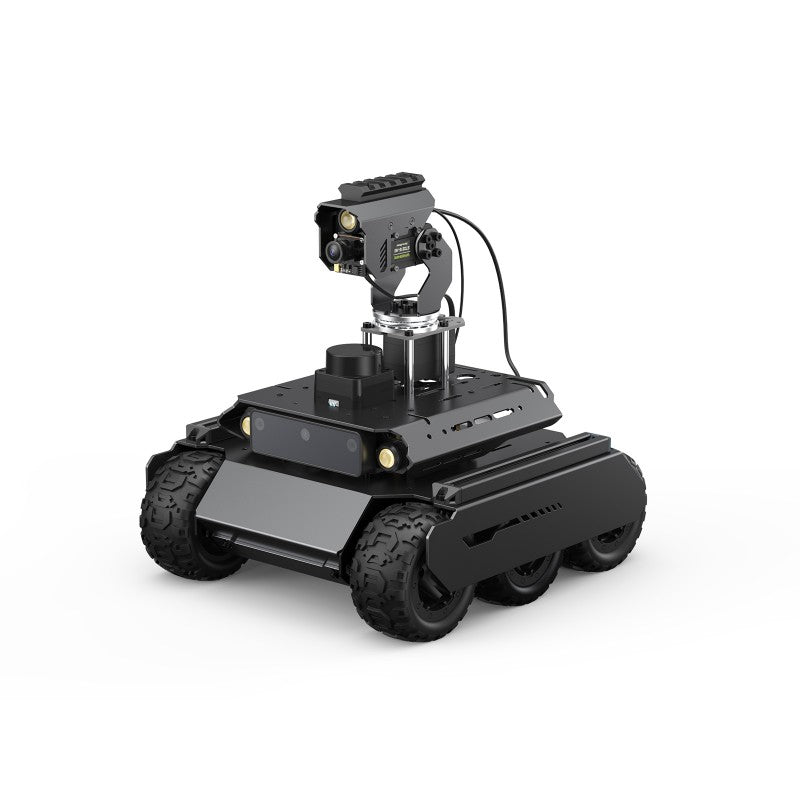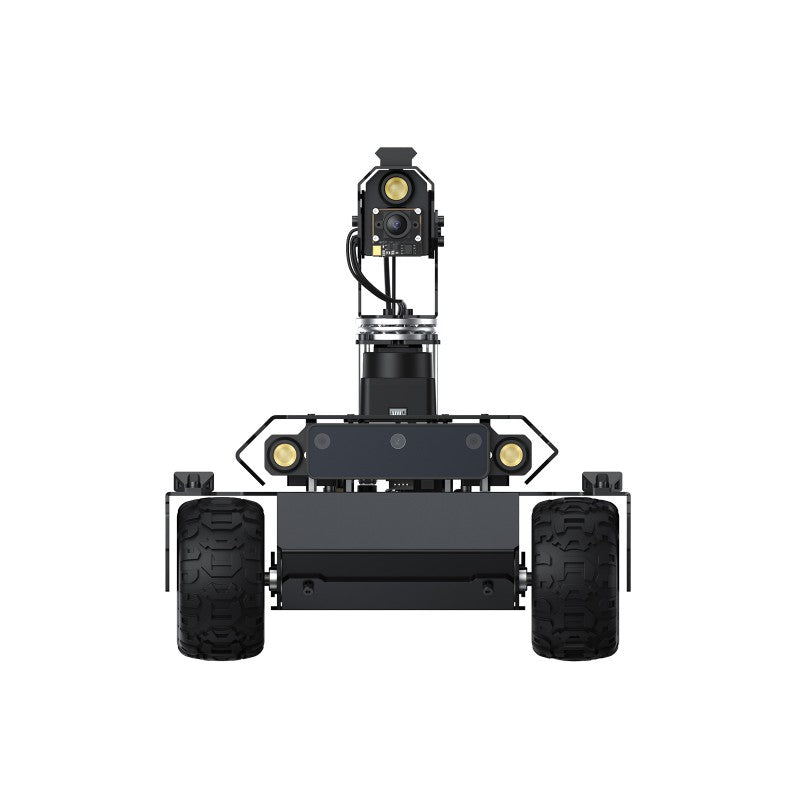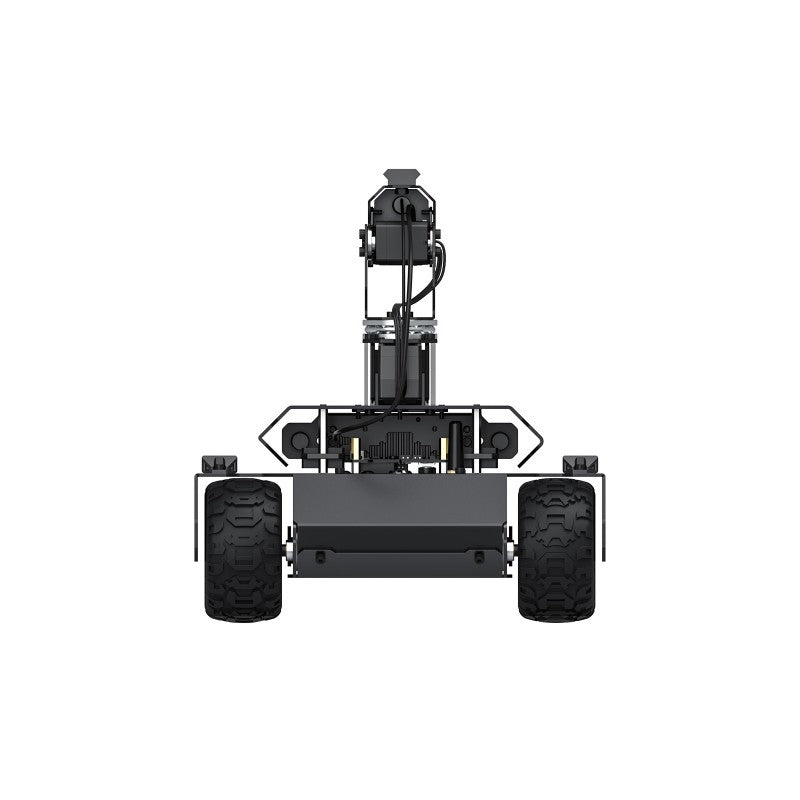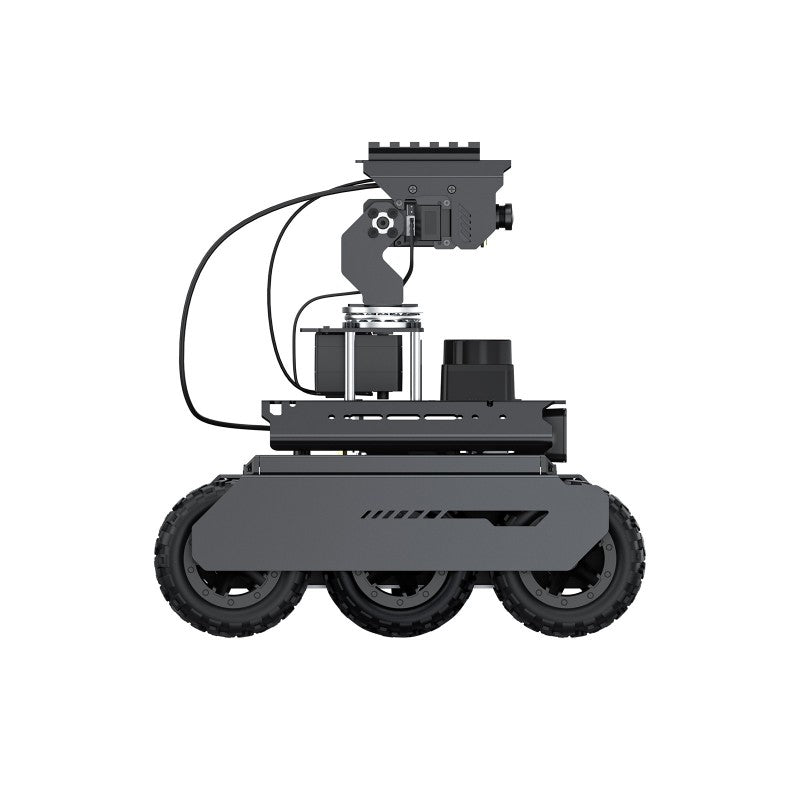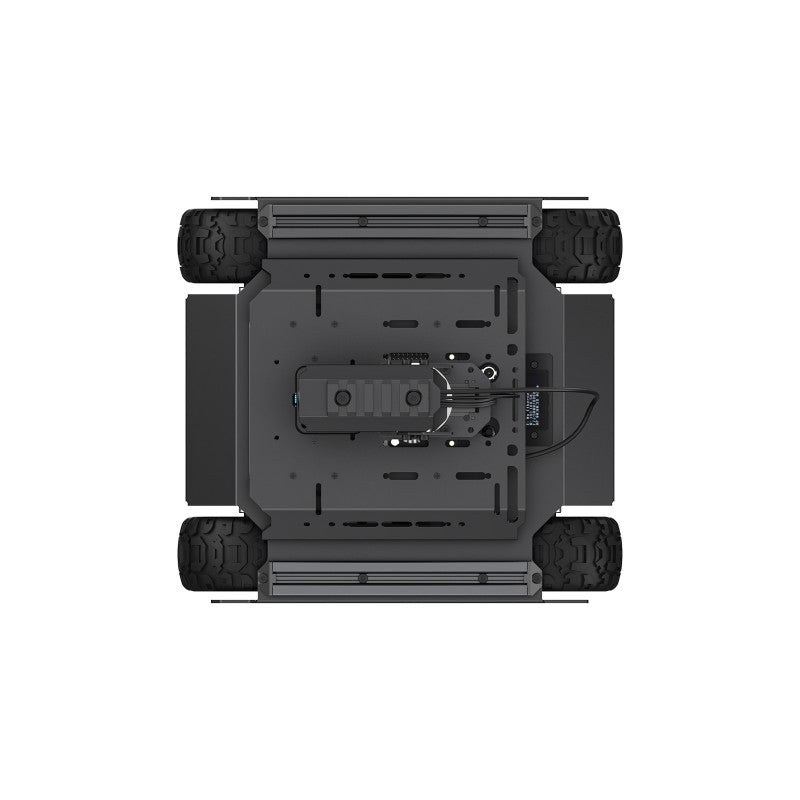

The UGV Rover ROS2 Kit is an AI robot designed for exploration and creation with excellent expansion potential, based on ROS 2 and equipped with Lidar and depth camera, seamlessly connecting your imagination with reality. Suitable for tech enthusiasts, makers, or beginners in programming, it is your ideal choice for exploring the world of intelligent technology.
Equipped with the high-performance Raspberry Pi computer to meet the challenges of complex strategies and functions, and inspire your creativity. Adopts dual-controller design, combines the high-level AI functions of the host controller with the high-frequency basic operations of the sub controller, making every operation accurate and smooth.
Easy to be controlled remotely via UGV Rover Web Application without downloading any software, just open your browser and start your journey. You can use the basic ROS 2 functions of the robot without installing a virtual machine on the PC. Supports high-frame rate real-time video transmission and multiple AI Computer Vision functions, the UGV Rover is an ideal platform to realize your ideas and creativity!
Dual-Controller Design,
Provides Efficient Collaboration And Upgraded Performance
The Host Controller Adopts Raspberry Pi For AI Vision And Strategy Planning, And The Sub Controller Uses ESP32 For Motion Control And Sensor Data Processing
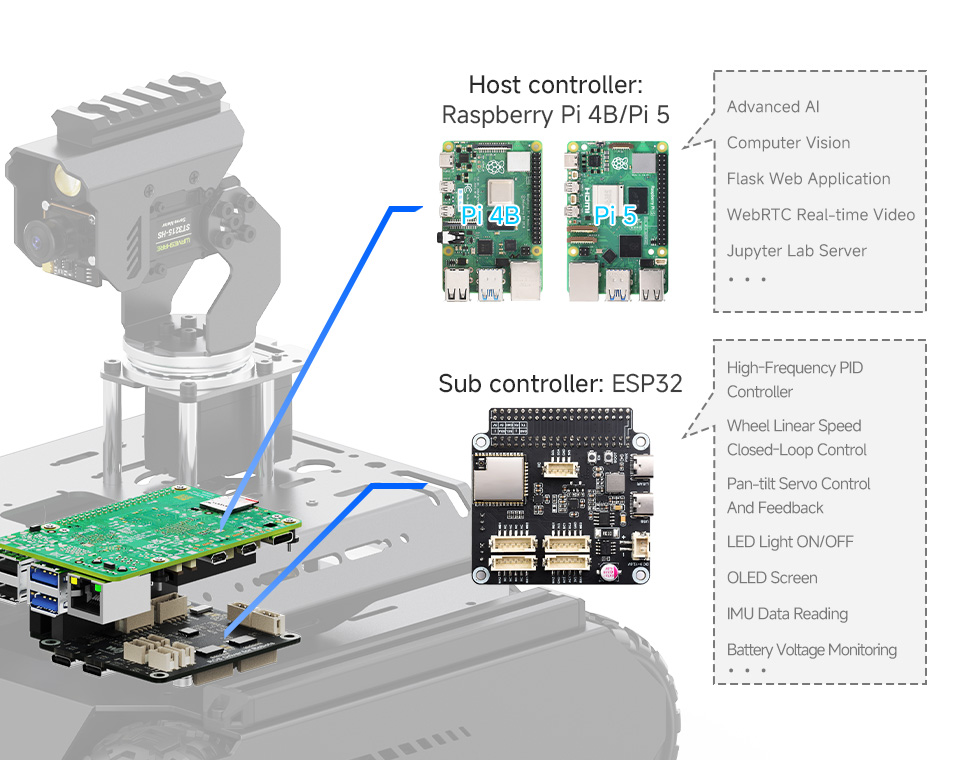
Raspberry Pi OS + ROS2 Docker
Ensures Advanced Decision-Making Performance Of Robot And System Compatibility At The Same Time. Supports All AI Functions Of The Previous AI Kit Series Products
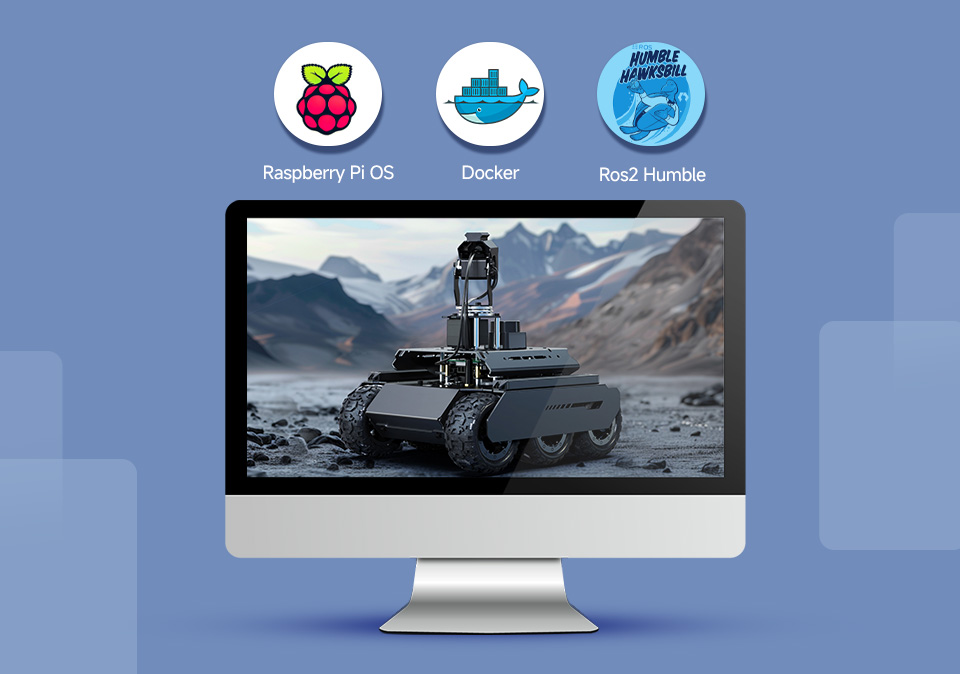
360° Flexible Omnidirectional Pan-Tilt
Equipped With 5MP 160° Wide-Angle Camera For Capturing Every Detail
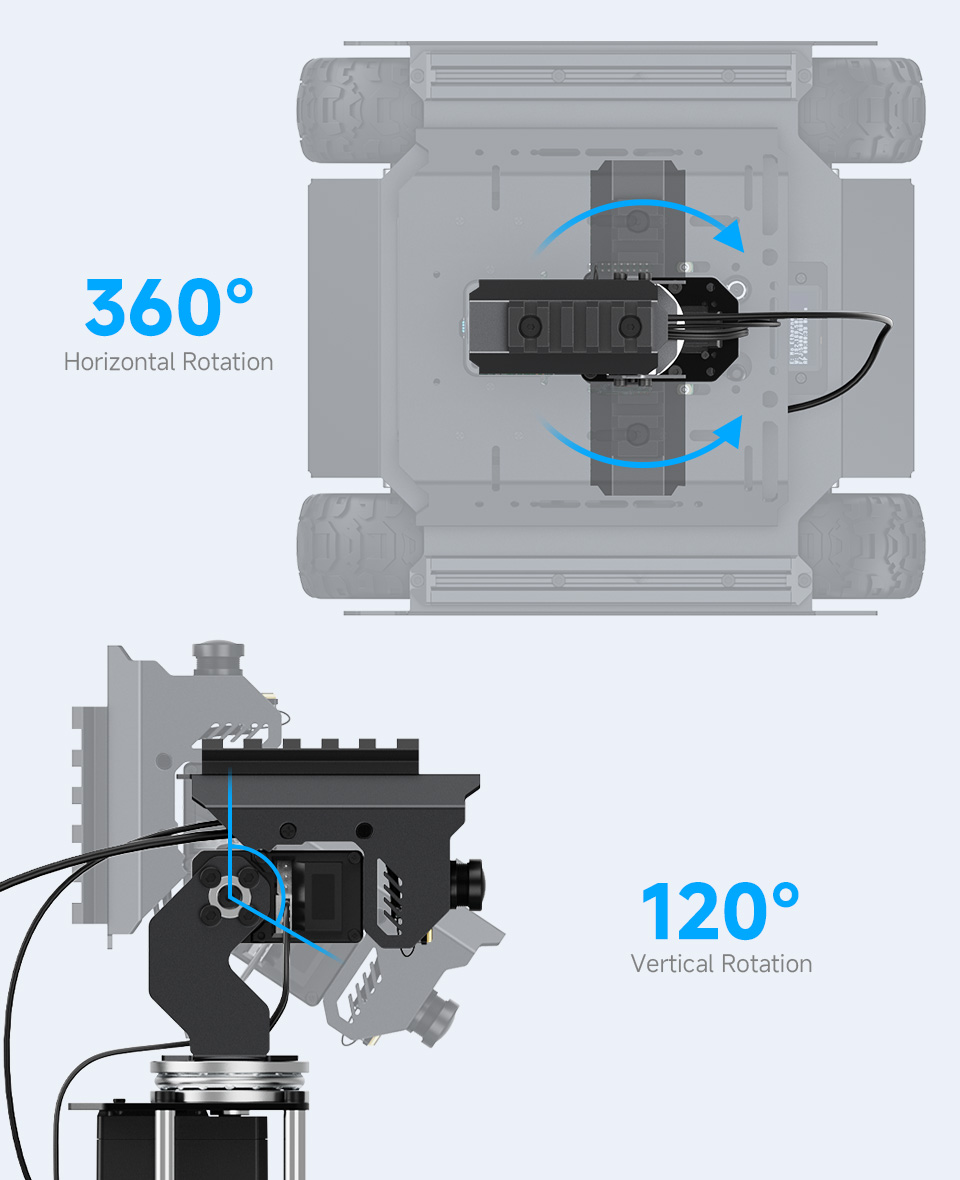
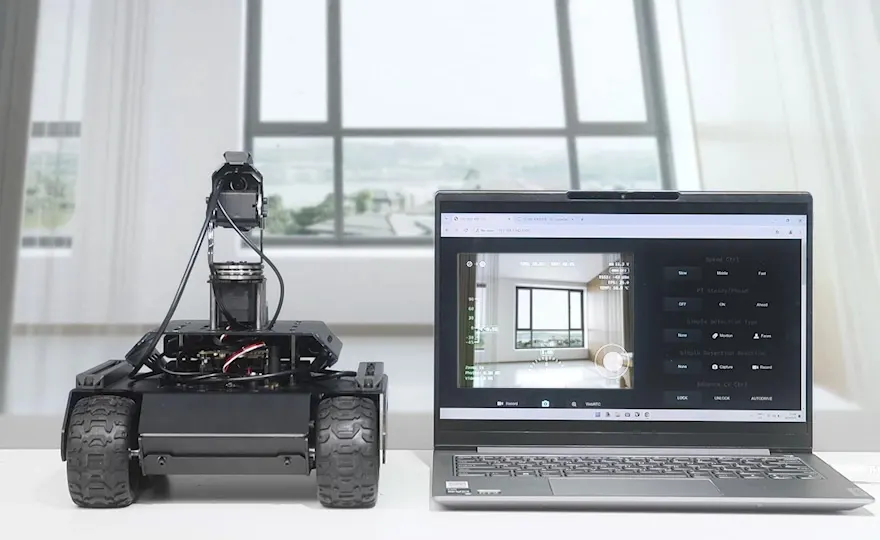
The Pan-Tilt adopts high-torque bus servos with excellent expansion potential, providing a better control experience as FPS games
Open Source For All ROS 2 Development Resources
Open Source For All Demos Of Host Controller And Sub Controller, Including Robot Description File (URDF Model), Sensor Data Processing Node Of Sub Controller, Kinematic Control Algorithms, And Various Remote Control Nodes
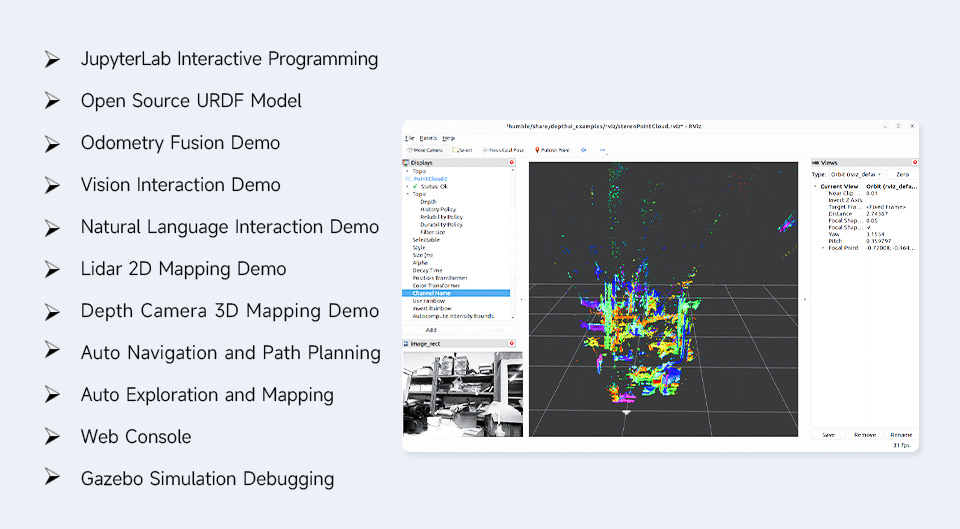
Integrates Various ROS 2 Mapping Methods
Meet The Needs Of Mapping In Different Scenarios

Gmapping 2D mapping |
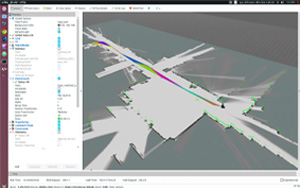
Cartographer 2D mapping |
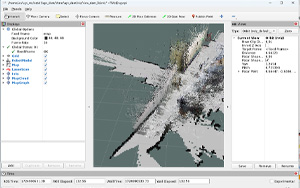
RTAB-Map 3D mapping |
Multiple Cost-Effective Sensors
Adopts Multiple Sensors With High Cost-Effectiveness And Practicality
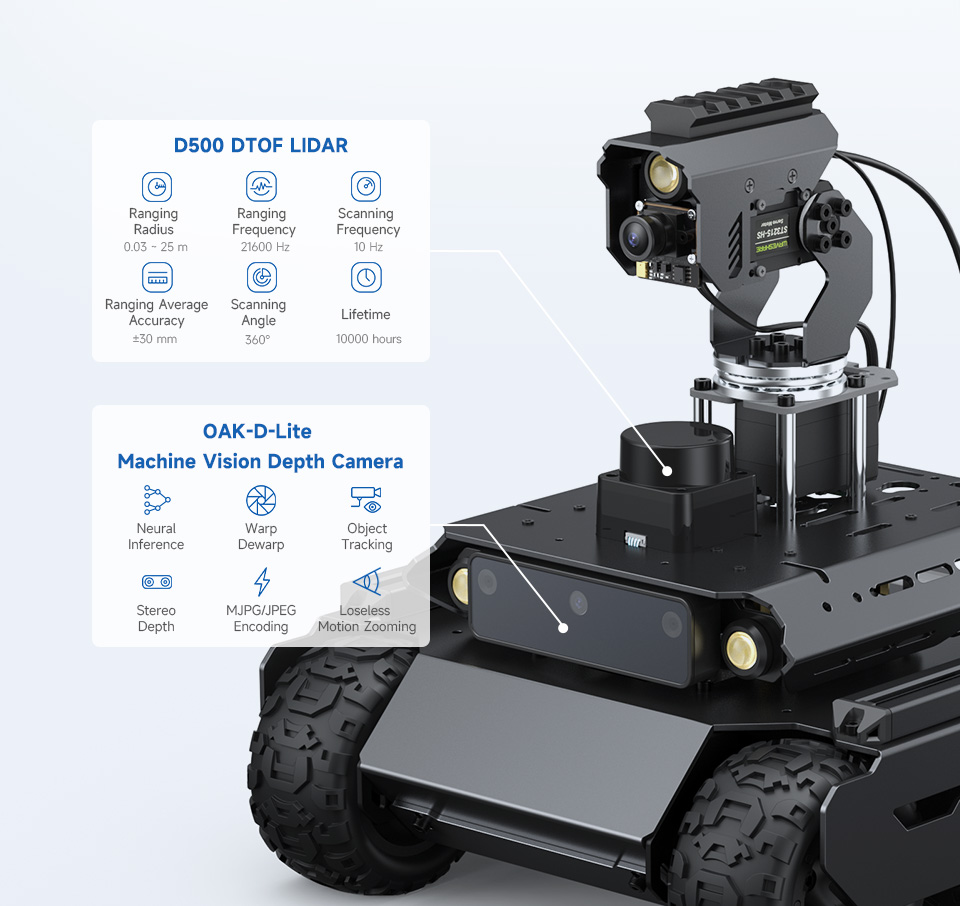
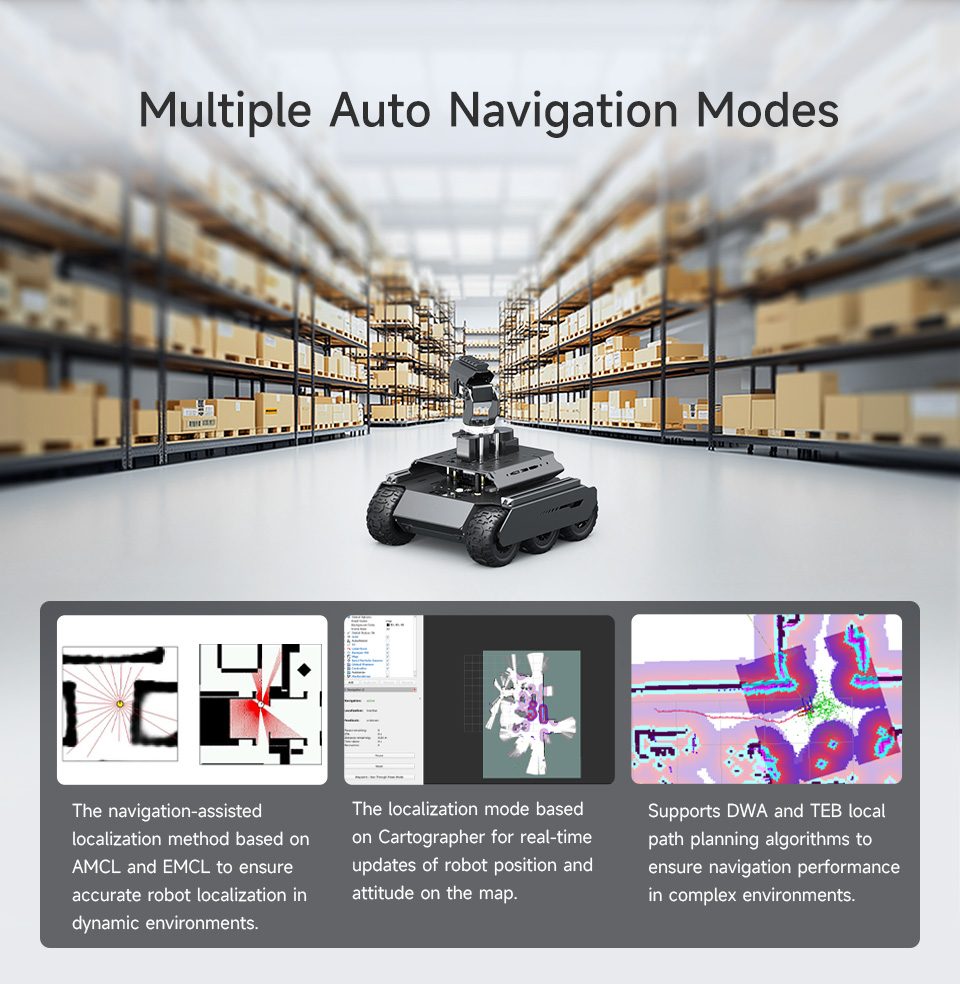
Auto Exploration And Mapping
Using SLAM Toolbox To Implement Mapping And Navigation Functions Simultaneously In Unknown Environments, Simplifying The Task Execution Process. The UGV Robot Can Autonomously Explore Unknown Areas And Complete The Mapping, Suitable For Unmanned Applications
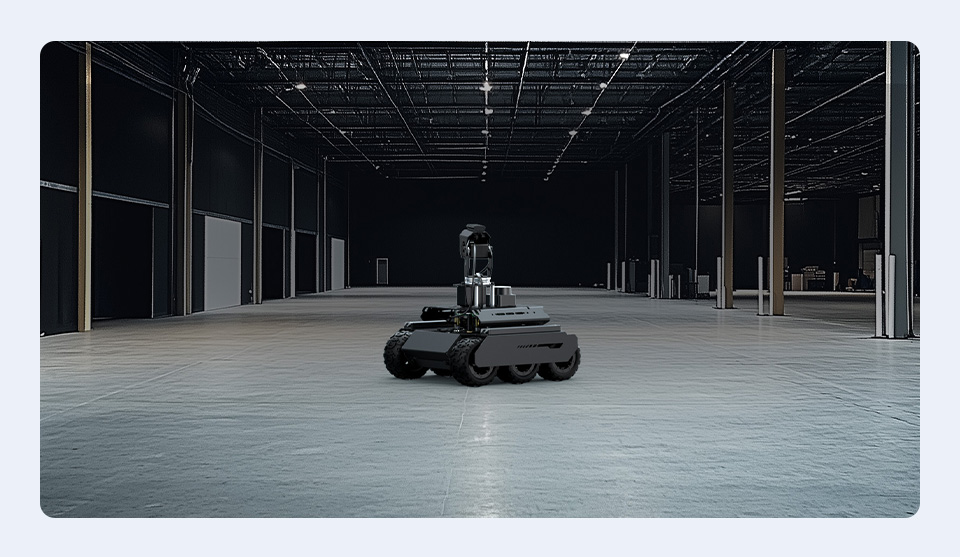
Supports Natural Language Interaction
Adopts Large Language Model (LLM) Technology, Users Can Give Commands To The Robot By Natural Language, Enabling It To Perform Tasks Such As Moving, Mapping, And Navigation
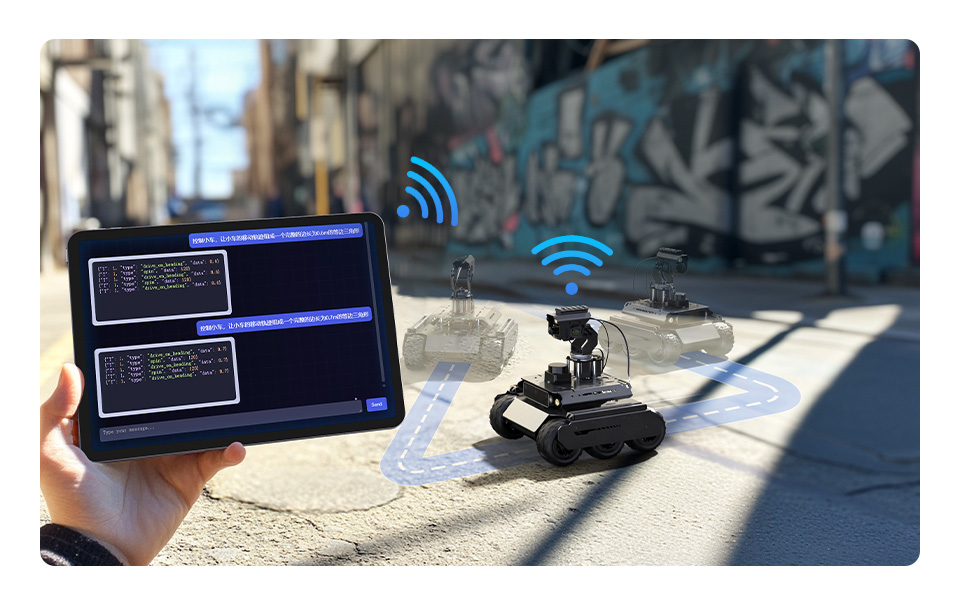
Provides Web Console Tool
You Can Use The Basic ROS 2 Functions On The Web Without Installing A Virtual Machine On The PC, Supports Cross-Platform Operation On Android Or IOS Tablets. Users Can Simply Open A Browser And Control The Robot For Moving, Mapping, Navigation, And Other Operations
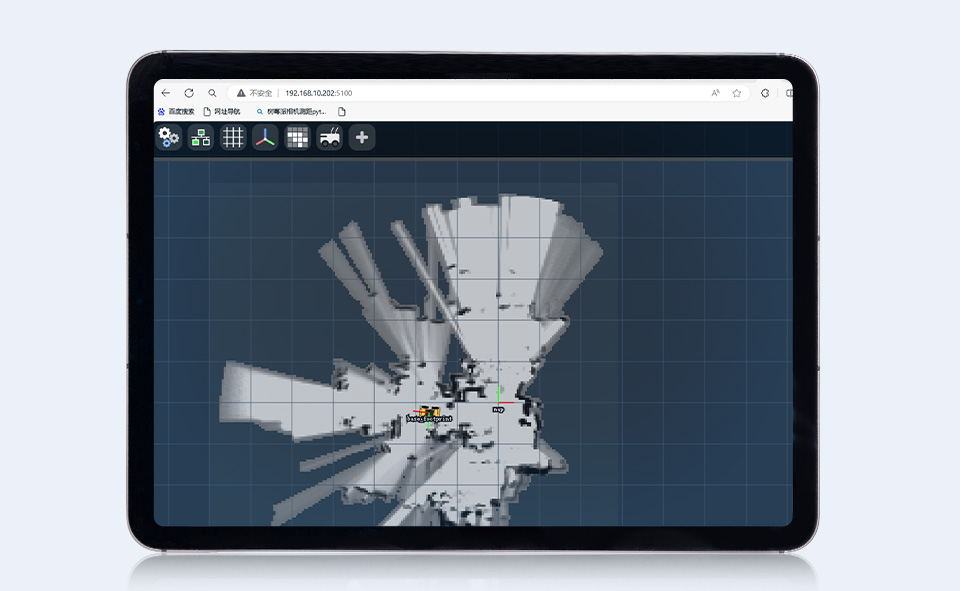
ROS2 Node Command Interaction
Users Can Send Control Commands To The Robot By A Script For Performing Operations Such As Moving, Obtaining The Current Location, And Navigating To A Specific Point, Etc. Which Is More Convenient For Secondary Development
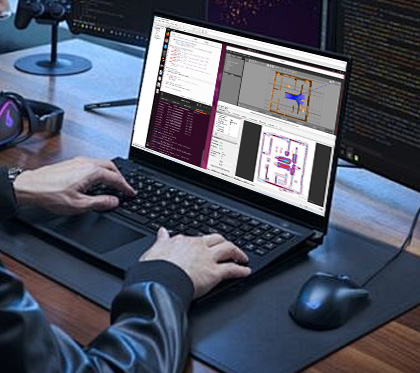 |
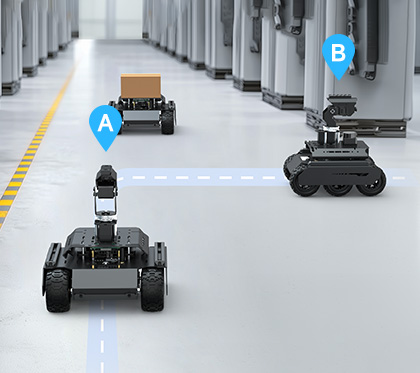 |
Gazebo Simulation Debugging
Provides Gazebo Robot Mode And Complete Functionality Library For Simulation Debugging, Helping You Verify And Test The System During The Early Stages Of Development

Continuing The Adventure As Night Falls
High-Brightness LED Light For Ensuring Clear Images In Low-Light Conditions
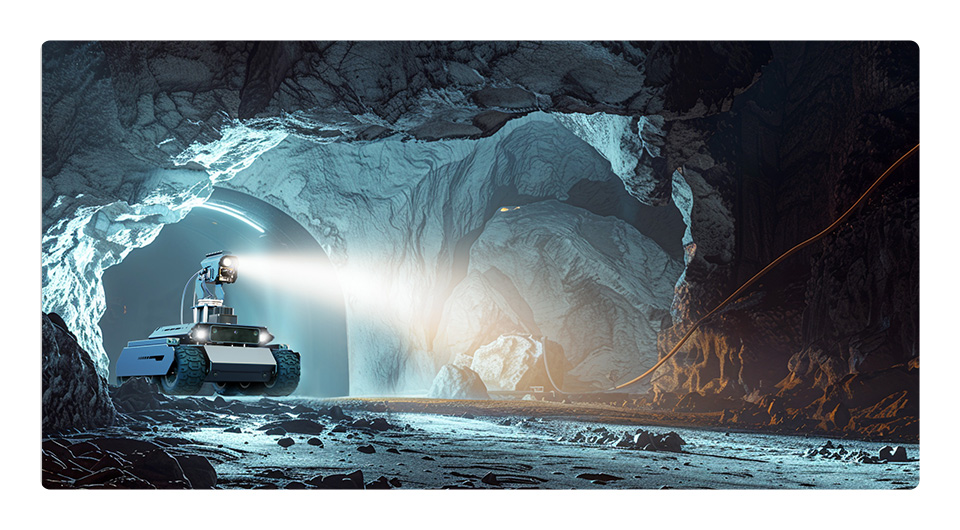
Suitable For Tactical Extension
Comes With 21mm Wide Rail And 30KG.CM High Precision & High-Torque Bus Servo For Tactical Extension
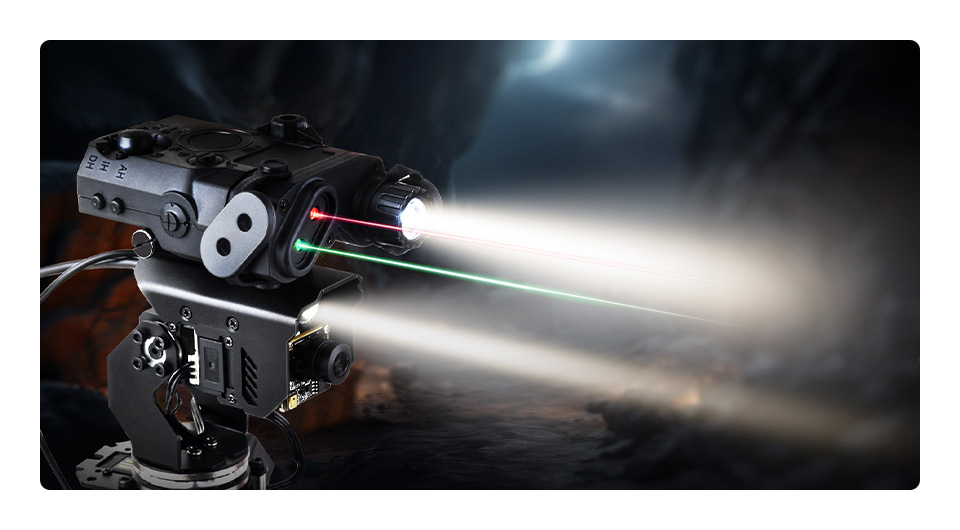
for reference only, the accessories in the picture above are NOT included
Standard Aluminum Rail
Comes With 2 × 1020 European Standard Profile Rails, And Supports Installing Additional Peripherals Via The Boat Nuts To Meet Different Needs, Easily Expanding The Special Operation Scenarios
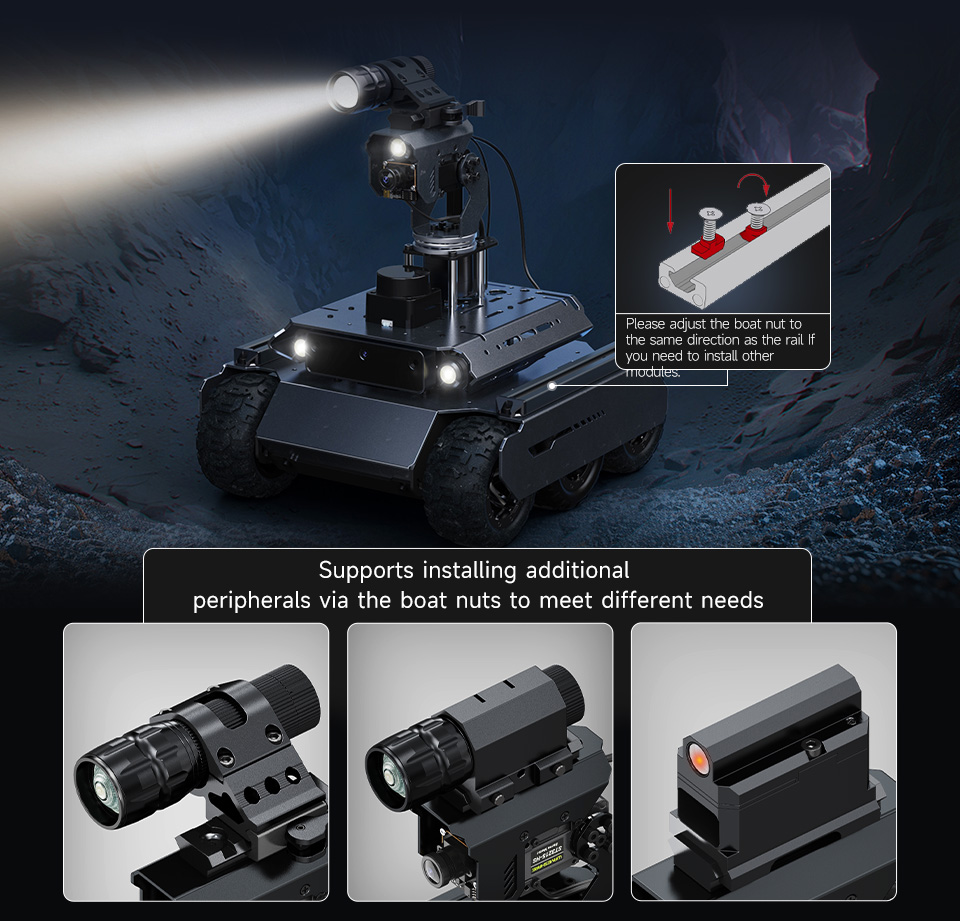
Note: Only the rail, boat nuts, and M4 screws are included, other accessories should be purchased separately.
Supports Driving In Complex Terrain
6 Wheels × 4WD Design, Using 6 Wheels Can Provide A More Stable Platform And Larger Contact Area, While 4WD Can Provide Stronger Power And Traction To Deal With Various Terrains And Obstacles
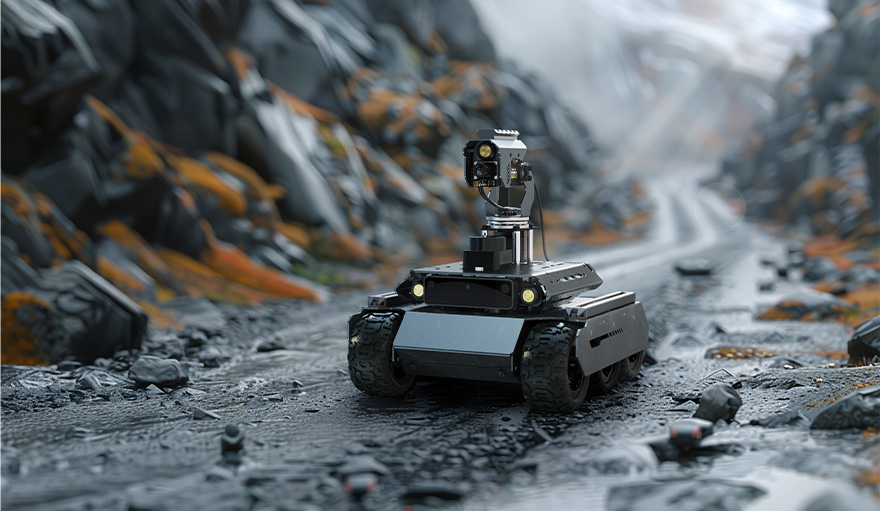
Easy To Control Via
Cross-Platform Web Application
No App Installation Required, Allows Users To Connect And Control The Robot Via Mobile Phones, Tablets And Computers Via Browser Web App. Supports Shortcut Key Control Such As WASD And The Mouse Via A PC With Keyboard
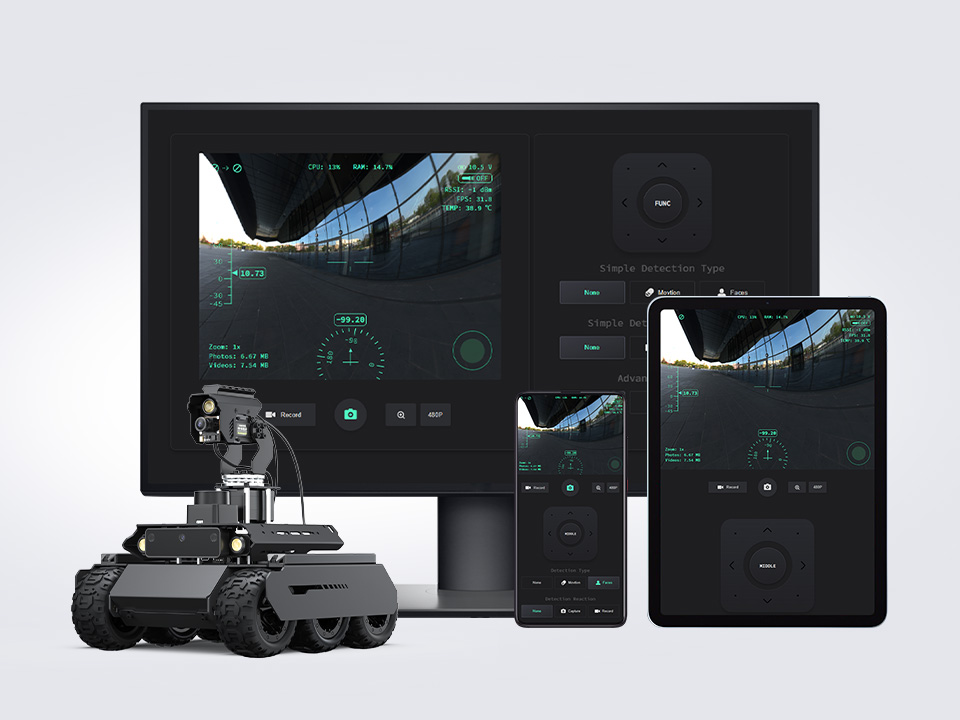
WebRTC Real-Time Video Transmission
Adopts Flask Lightweight Web Application, Based On WebRTC Ultra-Low Latency Real-Time Transmission, Using Python Language And Easy To Extend, Working Seamlessly With OpenCV
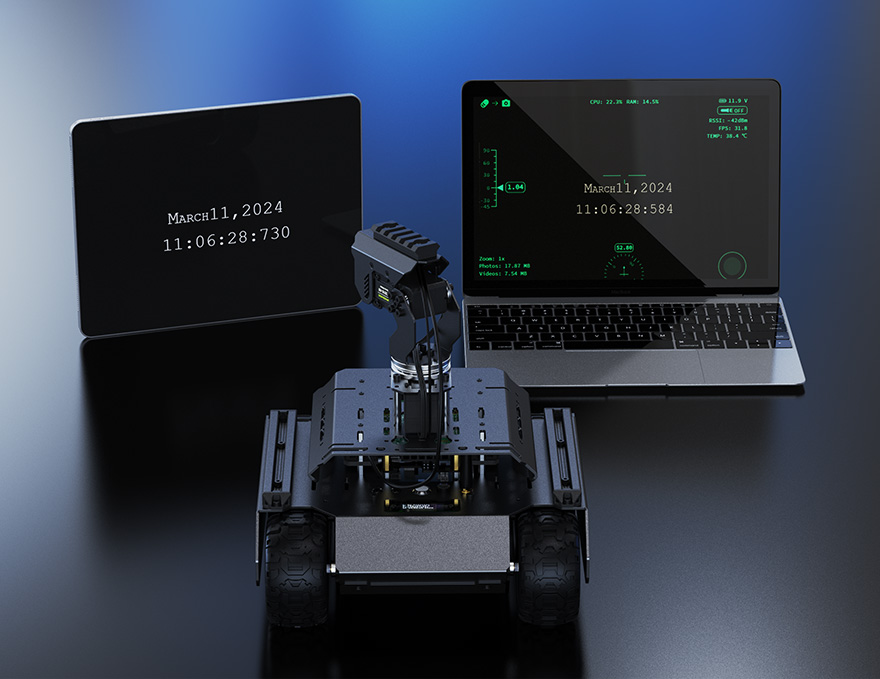
Recognition, Tracking, And Targeting
Based On OpenCV To Achieve Color Recognition And Automatic Targeting. Supports One-Key Pan-Tilt Control And Automatic LED Lighting, Allows Expansion For More Functions

Face Detection:
Automatic Picture Or Video Capturing
Based On OpenCV To Achieve Face Recognition, Supports Automatic Photo Taking Or Video Recording Once A Face Is Recognized
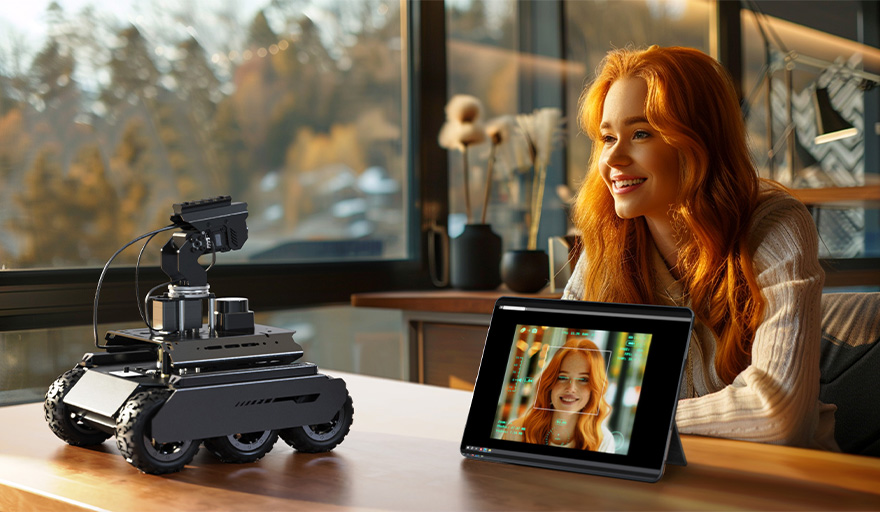
Intelligent Object Recognition
Supports Recognizing For Many Common Objects With The Default Model

Gesture Recognition:
AI Interaction With Body Language
Combines OpenCV And MediaPipe To Realize Gesture Control Of Pan-Tilt And LED
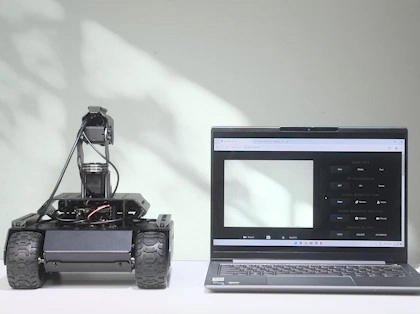
Gesture control for photo taking |
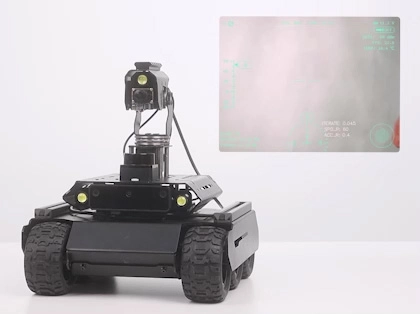
LED ON/OFF and blacklight control |
More MediaPipe Demos For Easily Creating
Complex Video Processing Tasks
MediaPipe is an open-source framework developed by Google for building cross-platform multimedia processing pipelines, provides a set of pre-built components and tools, its high-performance processing capability enables the robot to respond to and process complex multimedia inputs such as real-time video analytics.

Face Recognition |
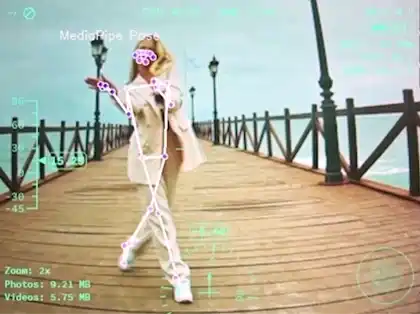
Attitude Detection |
40PIN GPIO Extended Header
The Robot Only Occupies The URAT Interface Of The Raspberry Pi GPIO For Communication, Adapting Outer Side 40PIN Header Of The Driver Board For Expanding More Peripherals And Functions
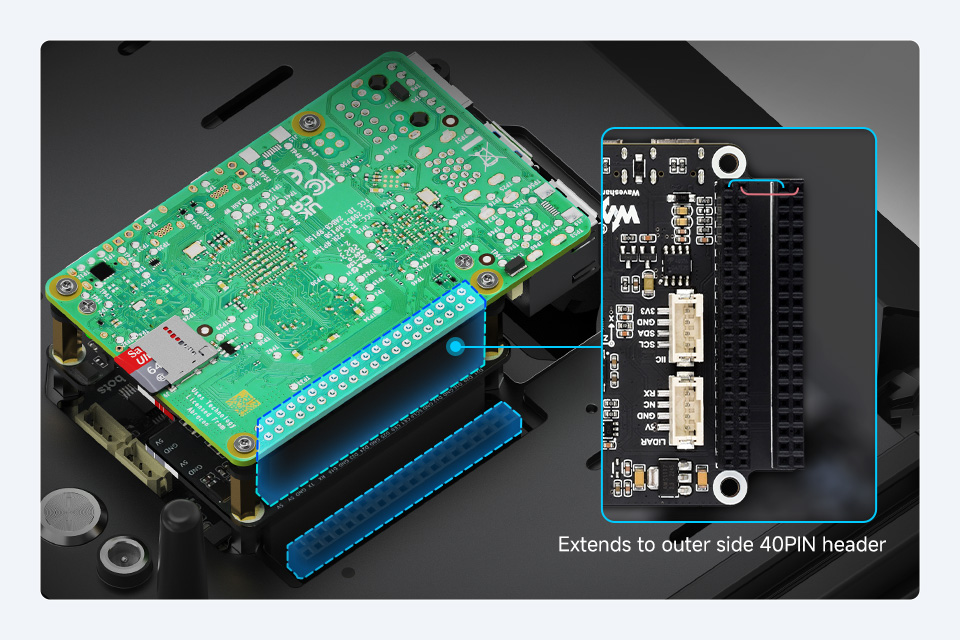
Obtains Real-Time Information Feedback
Real-Time Monitoring The Operating Status Of The Robot
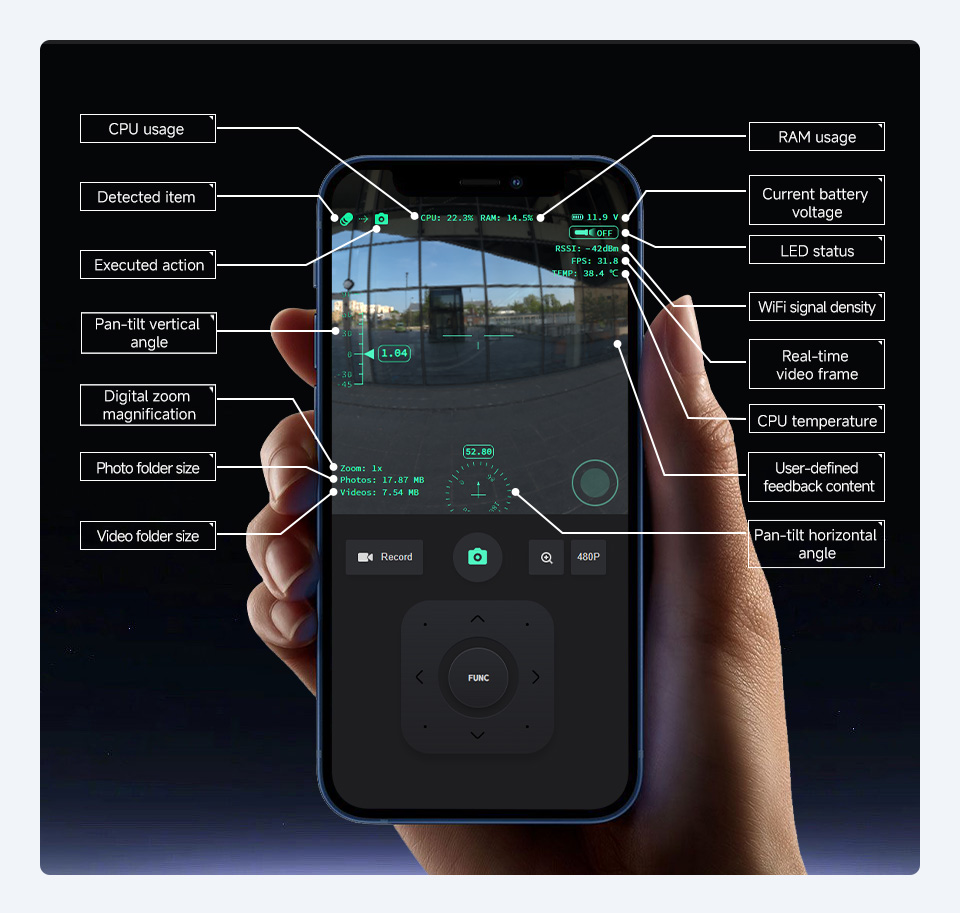
Web Page Command Line Tool
Multiple Functions For Easier Expansion
Quick To Set Up, Easy To Expand
Easily Customize And Add New Functions Without Modifying Front-End Code
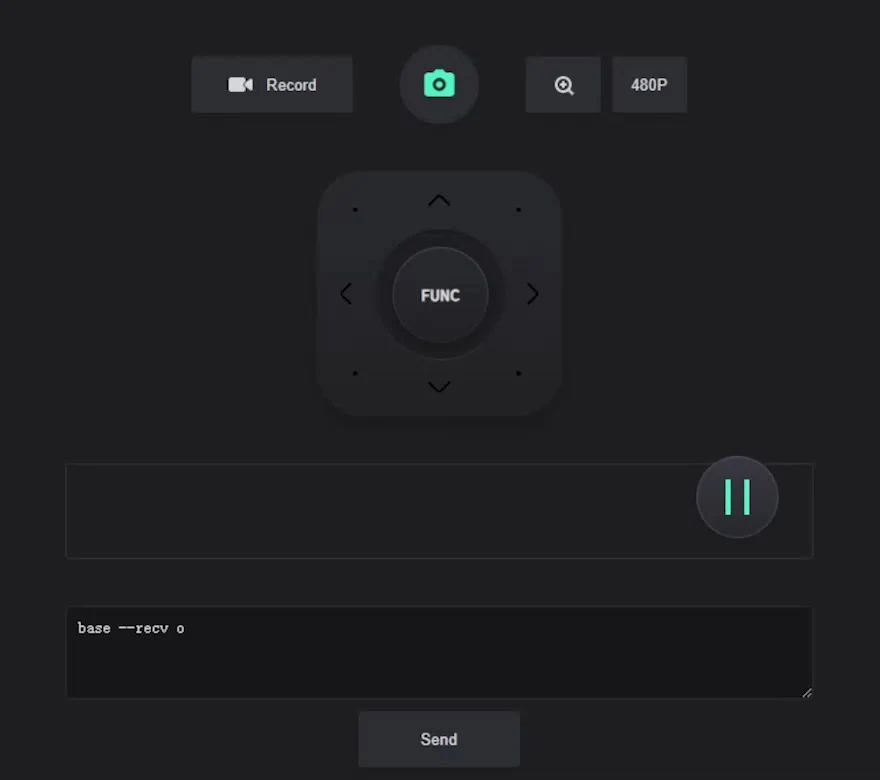
ESP-NOW Wireless Communication
Between Robots
Based On ESP-NOW Communication Protocol, Multiple Robots Can Communicate With Each Other Without IP Or MAC Address, Achieving Multi-Device Collaboration With 100-Microsecond Low-Latency Communication

Gamepad Control For Better Operation Experience
Comes With A Wireless Gamepad, Making Robot Control More Flexible. You Can Connect The USB Receiver To Your PC And Control The Robot Remotely Via The Internet. Provides Open Source Demo For Customizing Your Own Interaction Method
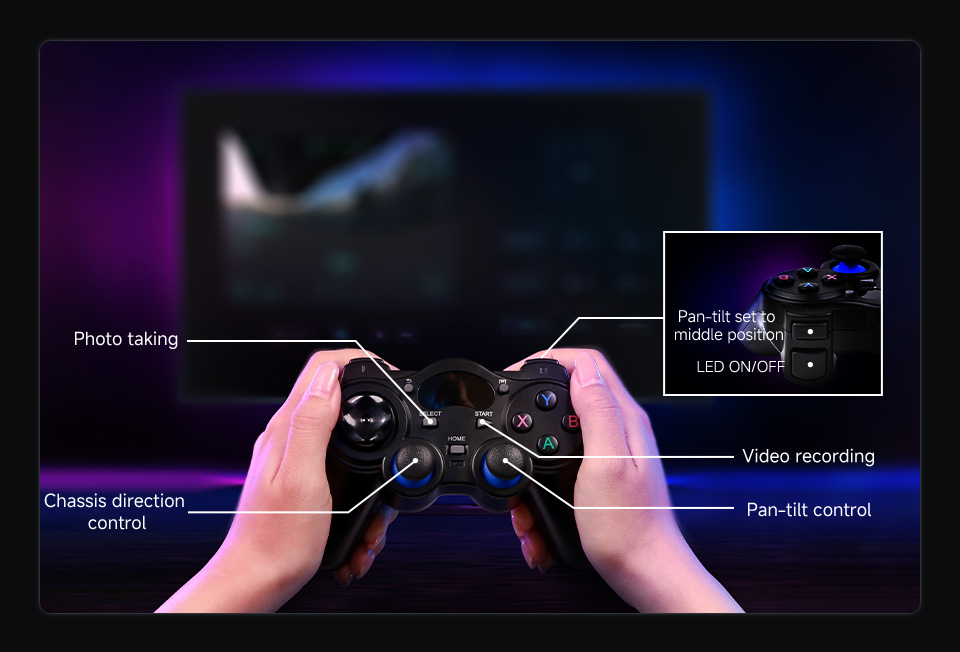
Supports 4G/5G Expansion
Supports Installing 4G/5G Module* For The Application Scenarios Without WiFi
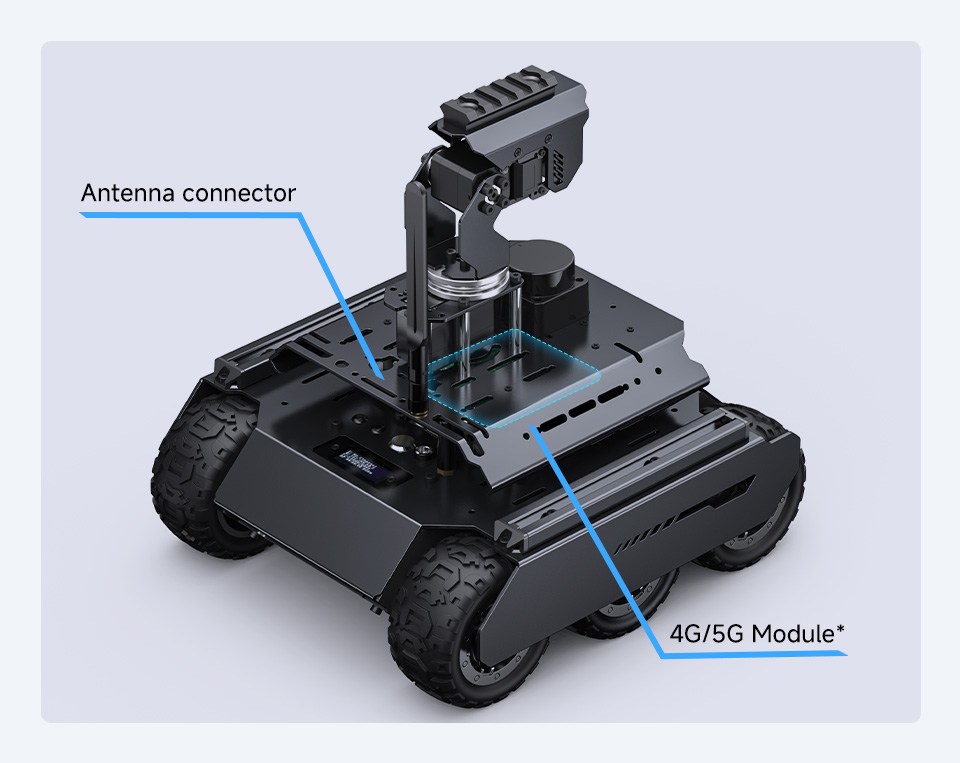
* You may need to use Tunneling Service such as Ngrok, Cpolar, or LocalTunnel to expose the local network service of the robot (Flask application) to the Internet so that you can control the robot from anywhere.
Realizes Remote Control Across The Internet
- Our web application demos are based on WebRTC for real-time video transmission.
- WebRTC (Web Real-Time Communications) is a technology that enables web applications and sites to establish peer-to-peer connection and capture optionally stream audio and/or video media, as well as to exchange arbitrary data between browsers without requiring an intermediary.
- We provide comprehensive Ngrok tutorials* to help you get started quickly and realize robot control across the internet.

* Provides the usage tutorials of Ngrok only, we do not provide any Ngrok accounts or Servers. You can follow our tutorial to open your own Ngrok service, or choose other tunneling services according to your needs.
Supports Installing Smartphone Holder
If You Have A Spare Phone, You Can Install It On The Robot Via Holder As Below, Using The Phone To Create A Hotspot For The Robot And Achieving Remote Control Across The Internet At A Lower Cost
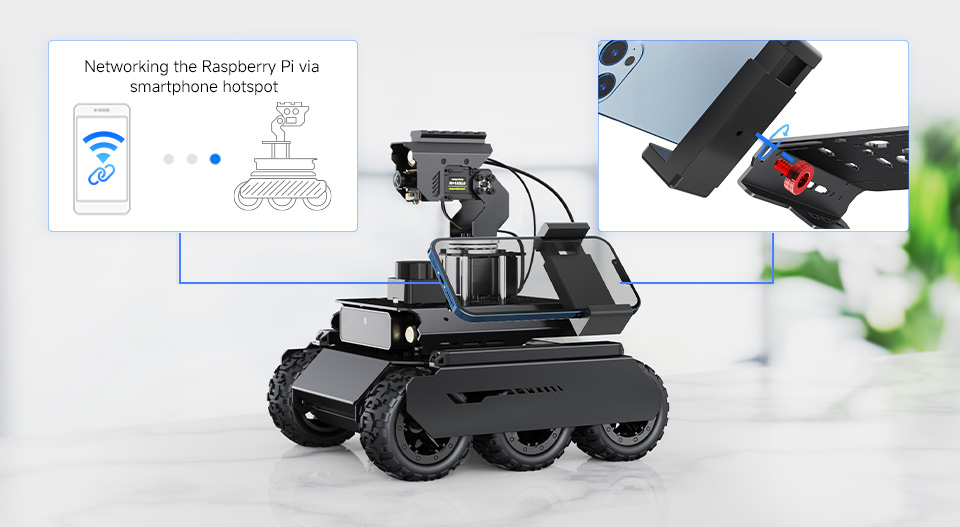
* Comes with a smartphone holder with 1/4″ screw in the package
Cross-Platform Interactive Tutorial
Develop While You Learn
Supports Accessing Jupyter Lab Via Devices Such As Mobile Phones And Tablets To Read The Tutorials And Edit The Code On The Web Page, Making Development Easier
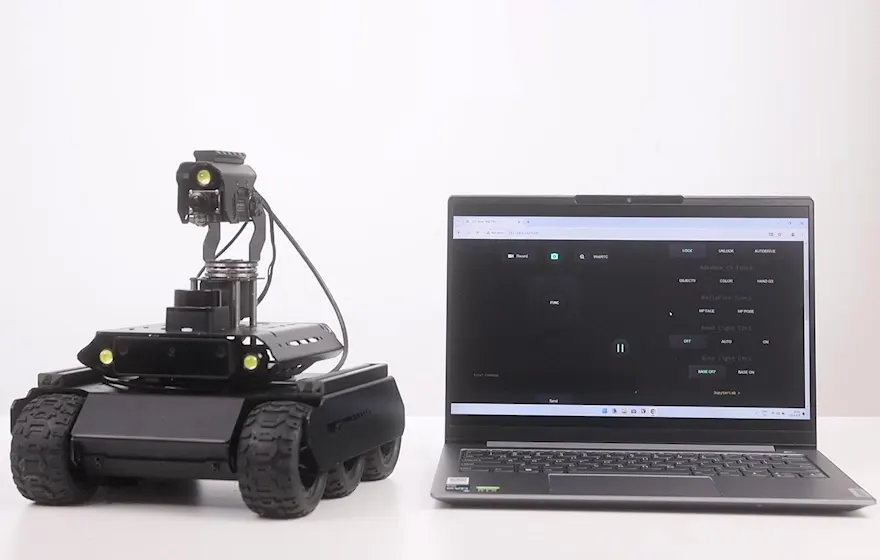

Rich Tutorial Resources
We Provide Complete Tutorials And Demos To Help Users Get Started Quickly For Learning And Secondary Development
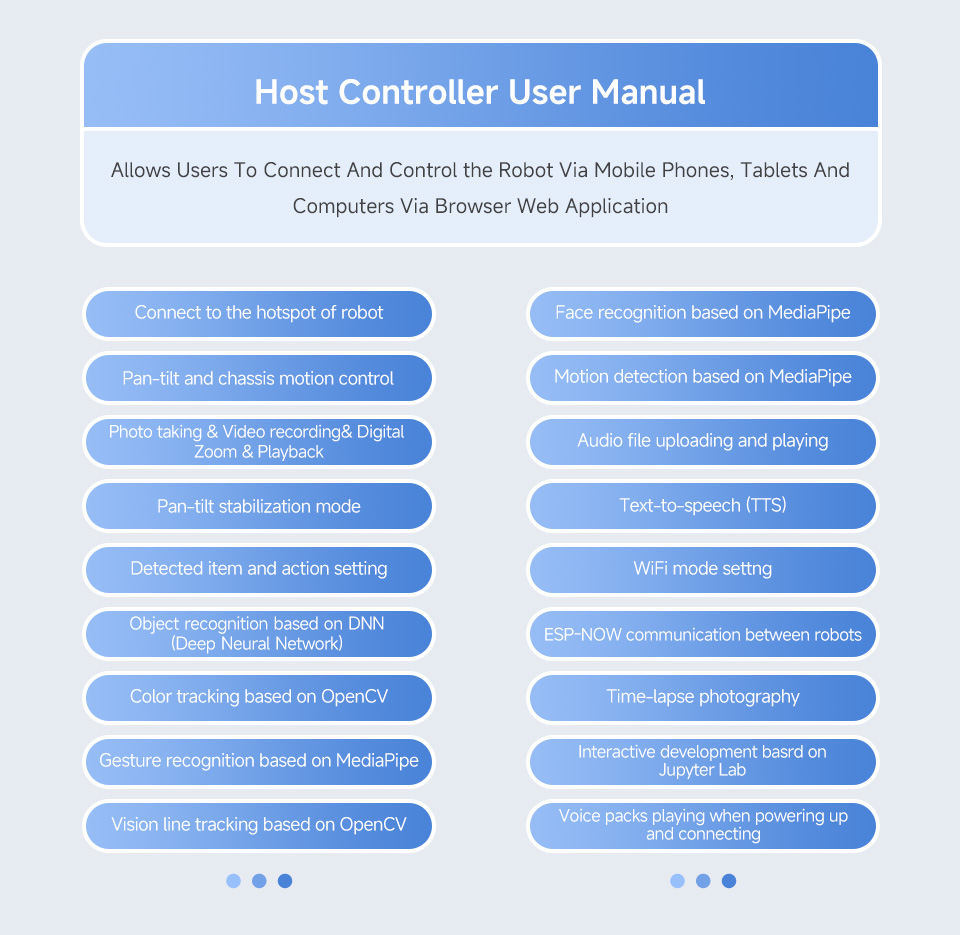


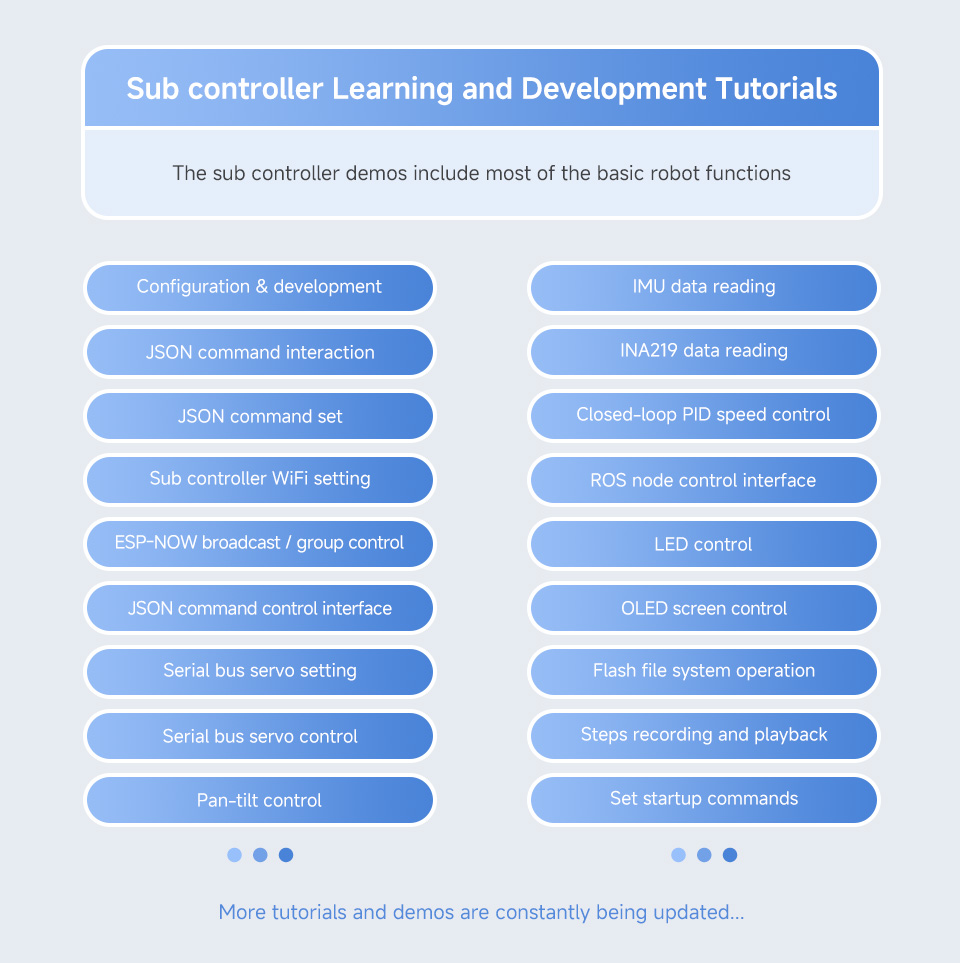
Open-Source All Demos
Full Dual-Controller Technology Stack
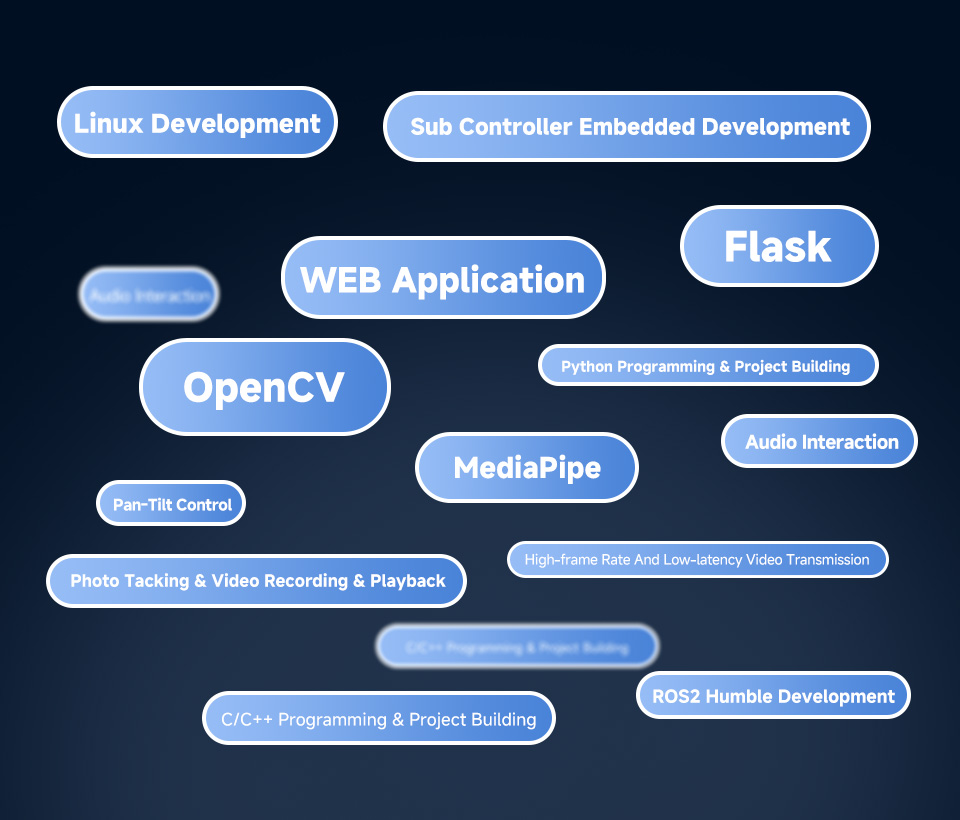
Outline Dimensions
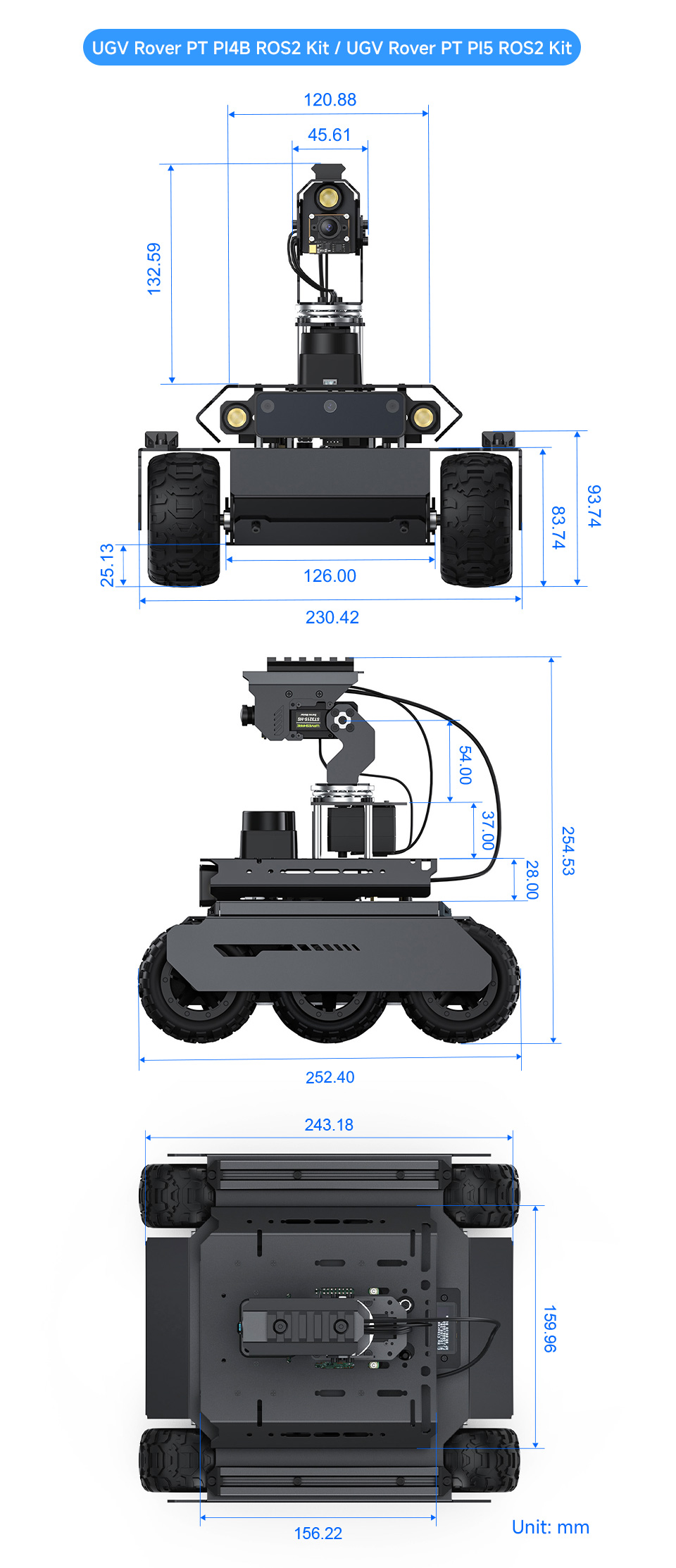
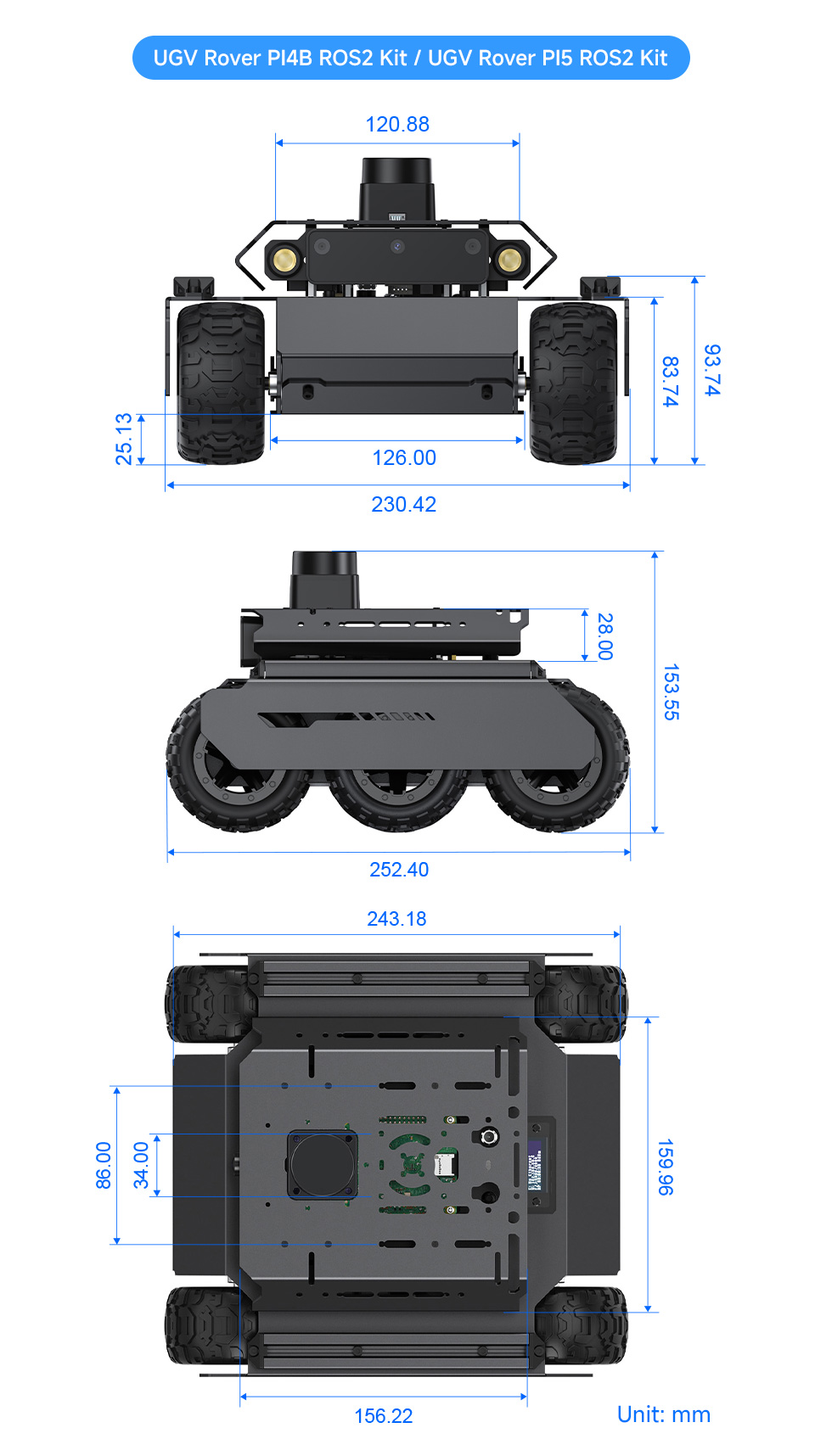
Resources
WIKI: www.waveshare.com/wiki/UGV_Rover_PI_ROS2
Package Contents:
Weight: 6.285 kg
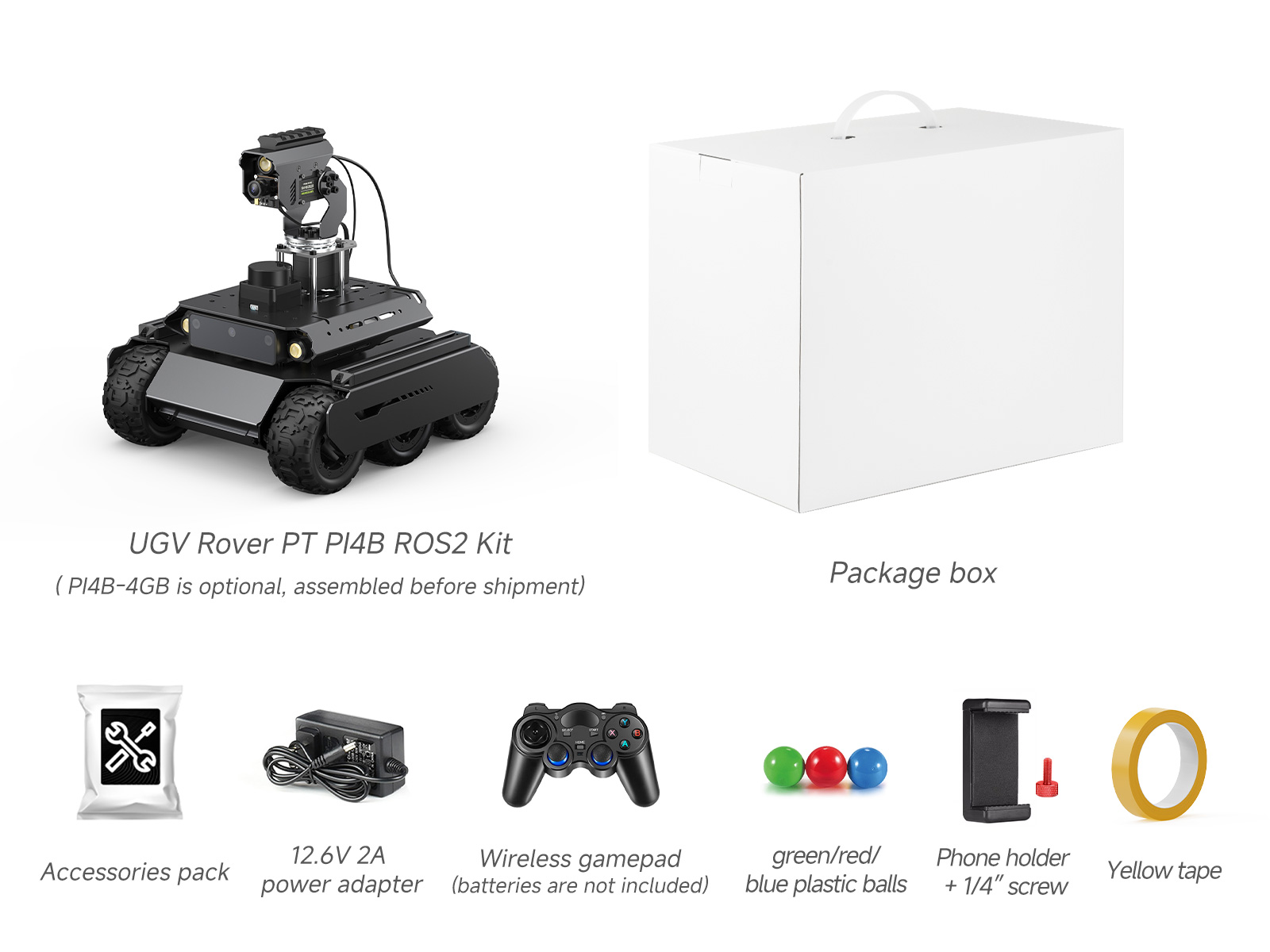
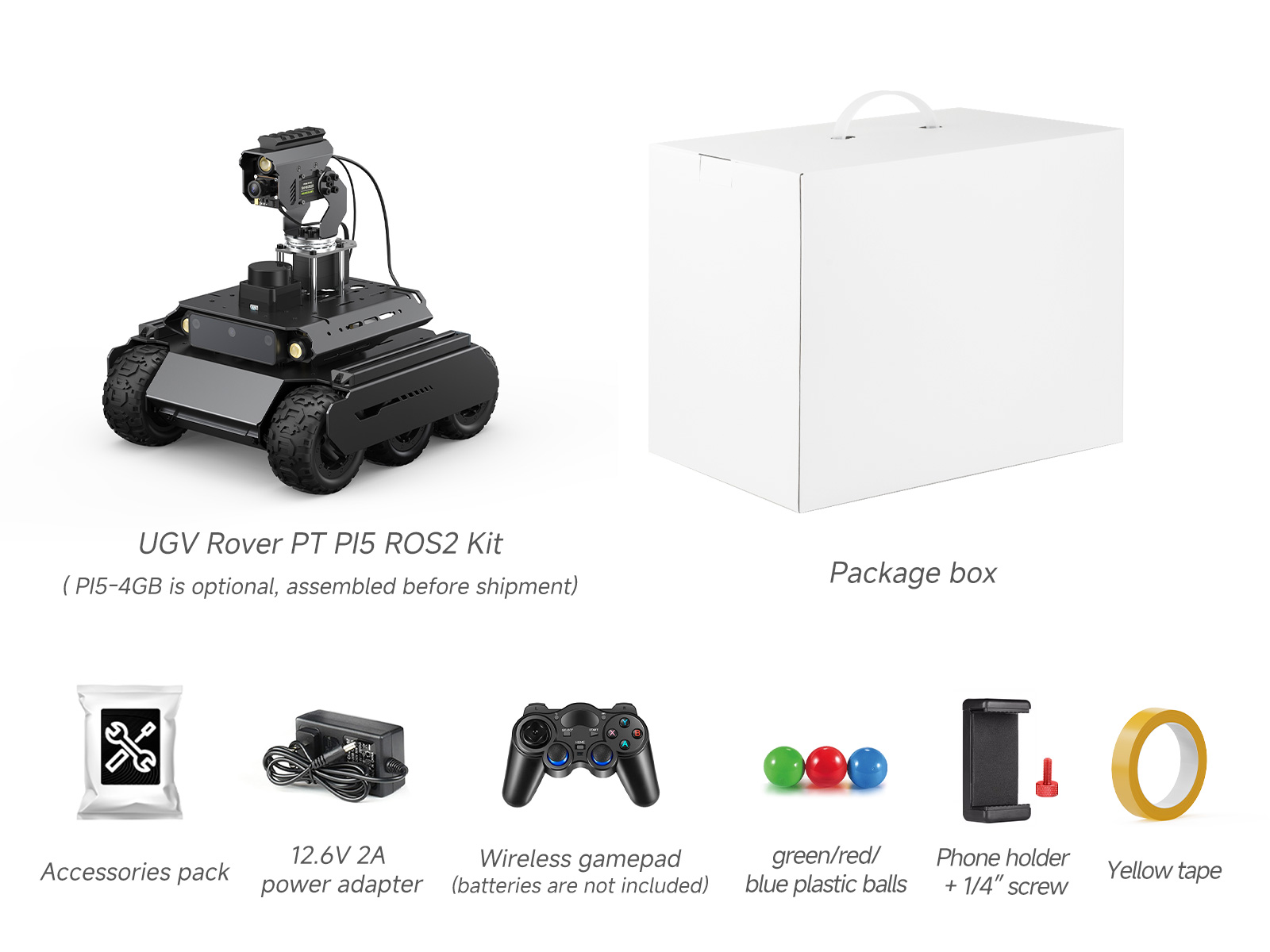
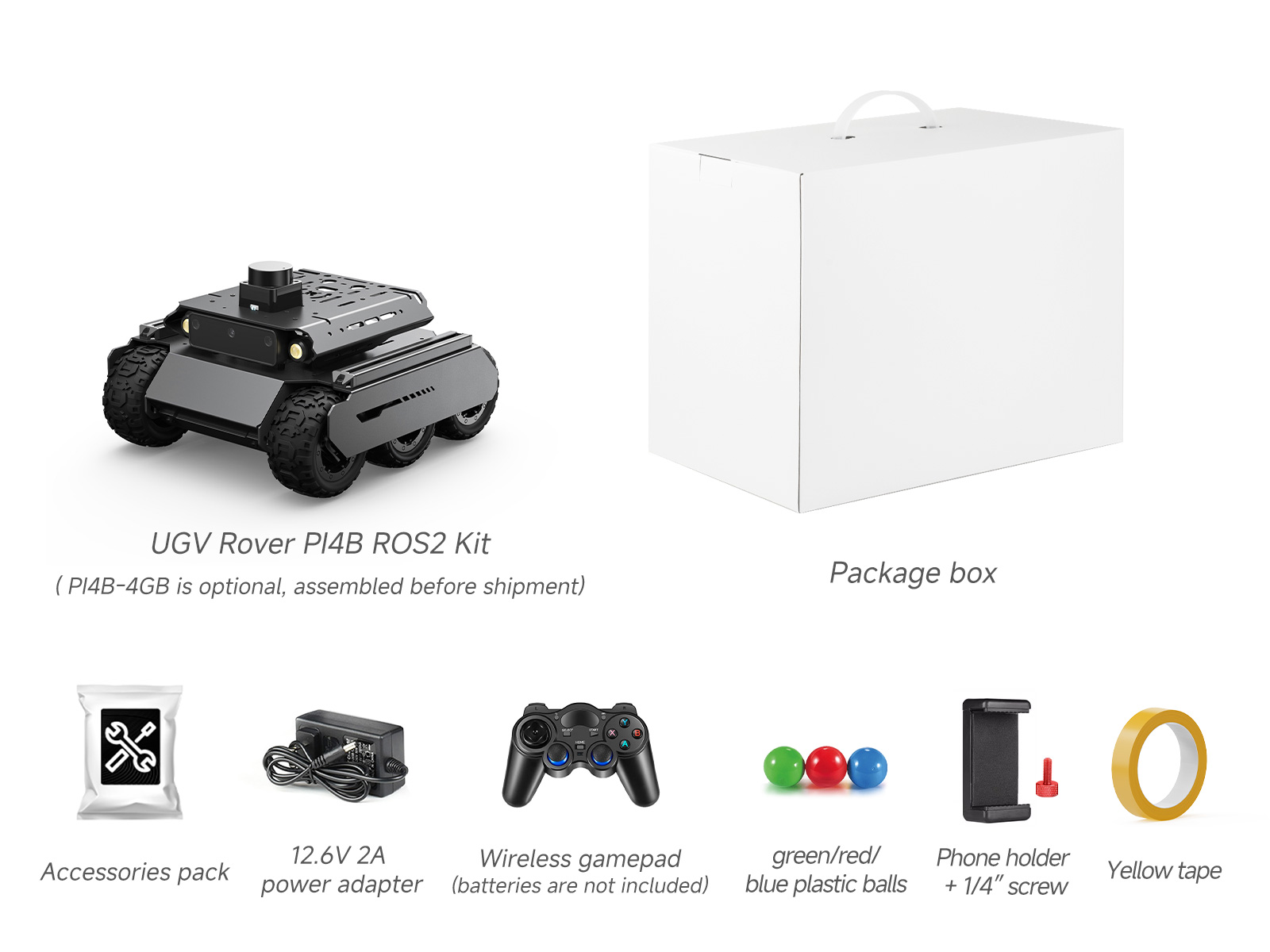
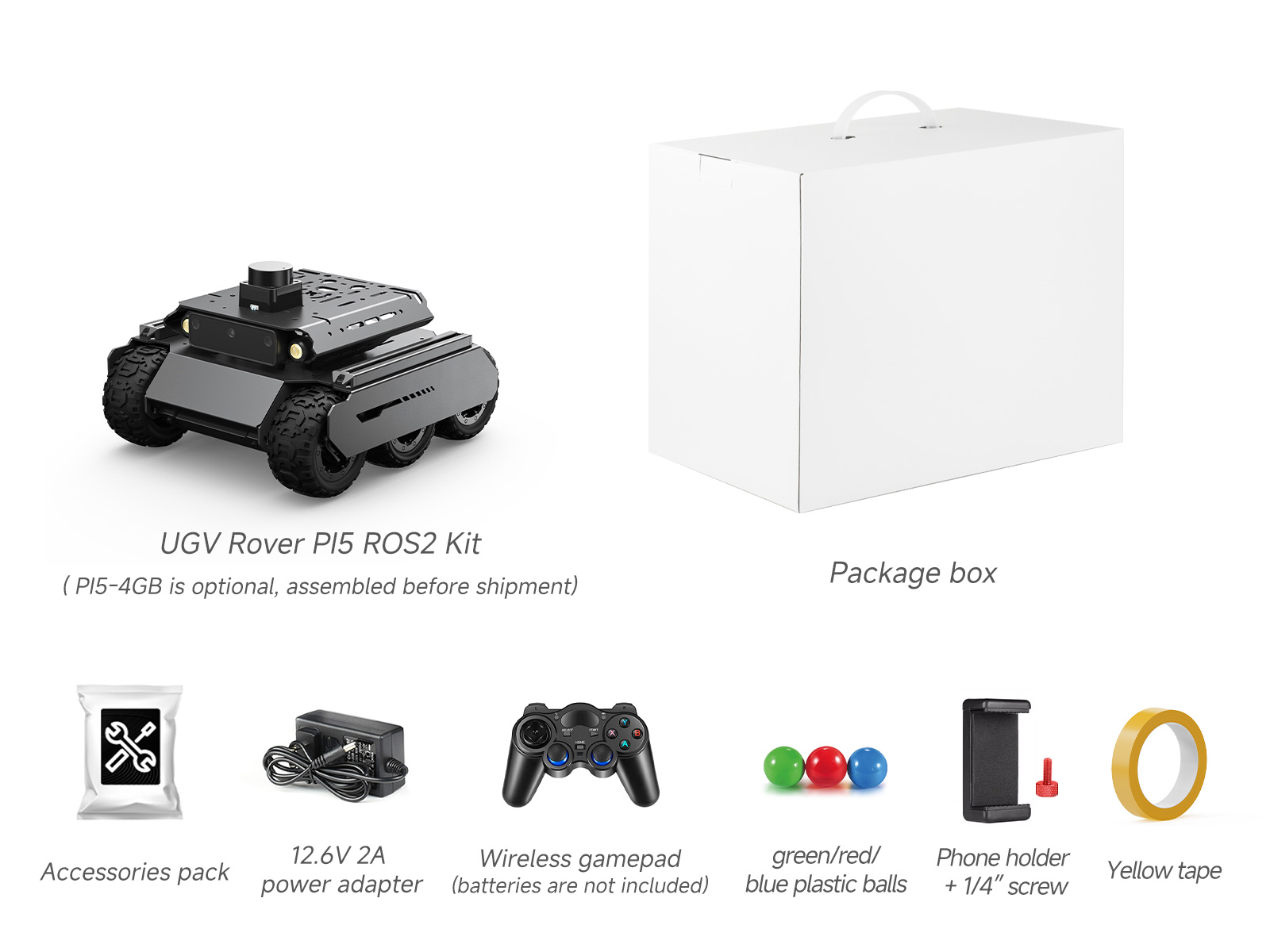
Want to buy in bulk?
Custom Requirements?
Discussion Forum
Feel free to ask questions, share tips or report issues.






